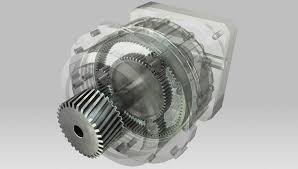Mobile:+86-311-808-126-83
Email:info@ydcastings.com
Exploring the Advantages of Centrifugal Casting Techniques for Stainless Steel Production
Centrifugal Casting of Stainless Steel An Overview
Centrifugal casting is a unique manufacturing process widely recognized for its ability to produce high-quality metal components with superior mechanical properties. Among the various metals that can be utilized in this technique, stainless steel has emerged as a preferred choice due to its remarkable corrosion resistance, strength, and aesthetic appeal. This article delves into the centrifugal casting process of stainless steel, exploring its advantages, applications, and the factors influencing its effectiveness.
Centrifugal casting, also known as rotocasting, involves pouring molten metal into a rotating mold. The centrifugal force generated by the rotation ensures that the molten material is pushed against the mold's walls, resulting in a denser and more uniform casting. This method is particularly effective for producing cylindrical parts, such as pipes, tubes, and various fittings—a common requirement in many industries.
One of the primary advantages of using stainless steel in centrifugal casting is its inherent properties. Stainless steel is known for its durability and resistance to oxidation and corrosion. This makes it an ideal material for components used in harsh environments, such as chemical processing, oil and gas, and food manufacturing industries. Moreover, stainless steel can withstand high temperatures while maintaining its structural integrity, making it suitable for a wide range of applications.
Another significant benefit of centrifugal casting is the reduction of defects and inclusions typically associated with traditional casting methods. The centrifugal force creates a casting that is denser and less prone to porosity. This results in stronger and more reliable components, which is particularly crucial in industries that demand high precision and durability. Additionally, the thin-walled structures achievable through this process can yield significant material savings and reduce production costs.
centrifugal casting stainless steel

Centrifugal casting is also versatile, accommodating a range of stainless steel grades, including austenitic, ferritic, and martensitic types. This versatility allows manufacturers to tailor the mechanical properties of the final product to meet specific performance requirements. For instance, austenitic stainless steels are often used for their excellent toughness and corrosion resistance, while martensitic grades may be employed for applications requiring higher hardness and strength.
Several factors influence the success of centrifugal casting stainless steel. The temperature of the molten material is critical; it must be maintained within a specific range to ensure the right viscosity for effective flow and filling of the mold. An improper temperature can lead to defects such as cold shuts or uneven thickness. Similarly, the speed of rotation must be optimized to achieve the requisite density and mechanical properties. Balancing these parameters effectively can make a significant difference in the quality of the final product.
Despite its many advantages, centrifugal casting does come with certain challenges. The upfront costs of the molds and equipment can be significant, especially for small-scale operations. Additionally, the process may not be suitable for all geometries, particularly those that are non-cylindrical. Nonetheless, the efficiency, strength, and quality of the components produced often justify these initial investments.
In conclusion, centrifugal casting of stainless steel represents a cutting-edge manufacturing solution that combines efficiency with high-quality output. Its ability to produce robust and corrosion-resistant components makes it invaluable across various industries, from automotive to aerospace and beyond. As technology evolves and innovations continue to emerge, the centrifugal casting process is likely to play an increasingly significant role in meeting the demands of modern manufacturing.
-
Why Should You Invest in Superior Pump Castings for Your Equipment?NewsJun.09,2025
-
Unlock Performance Potential with Stainless Impellers and Aluminum End CapsNewsJun.09,2025
-
Revolutionize Your Machinery with Superior Cast Iron and Aluminum ComponentsNewsJun.09,2025
-
Revolutionize Fluid Dynamics with Premium Pump ComponentsNewsJun.09,2025
-
Optimizing Industrial Systems with Essential Valve ComponentsNewsJun.09,2025
-
Elevate Grid Efficiency with High-Precision Power CastingsNewsJun.09,2025











